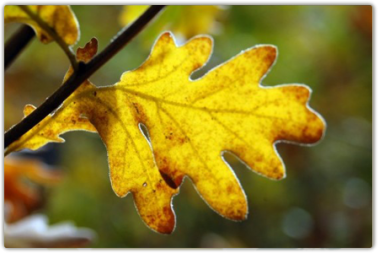Pyrenean oak groves
Singular places
, Siles
Cañada de Poyo Torres
As soon as you get out of the car, you are in the middle of a dense, dark Pyrenean oak (Quercus Pyrenaica) grove. This grove is one of the most demanding ecosystems in terms of soil quality, soil depth and moisture. There are very few Pyrenean oak groves in the Nature Reserve and they can only be found in a few places in the Segura mountains. This is one of the most important and interesting forests in the Reserve, with a host of plant species growing in it.
Oak forests covered the mountains in the past but they were felled for their wood, the land they grew on was transformed and occasionally they were logged indiscriminately. The forests dwindled and all that is left today are a few groves in certain places, particularly in southern Spain. The forest probably did not cover a very extensive area of the Nature Reserve in the past, but today there are only a few very small patches of oak groves left, as well as individual oaks that grow among the Corsican pines.
Pyrenean oak groves remind one of damp, misty Atlantic forests with twisted trunks covered in moss, like in Galicia, Asturias and Central Europe. On the Iberian Peninsula, Pyrenean oak groves grow on the Atlantic coast but they can also be found in the mountain ranges in the middle of Spain and further south, in Sierra Morena.
Other trees grow in the oak groves as well, including wild service trees (Sorbus torminalis), gall oaks (Quercus faginea) (with which the Pyrenean oaks cross-pollinate occasionally, producing a hybrid known as Quercus x welwitschii), maples (Acer granatense) and Corsican pines (Pinus nigra salzmannii), generally for reforestation purposes. Other bushes grow in profusion, such as hawthorns (Crataegus monogyna), silver thorns (Crataegus laciniata), wild privets (Ligustrum vulgare), rosehips (Rosa spp.), European wild apples (Malus sylvestris), blackberries (Rubus ulmifolius, R. canescens) and a few grey willows (Salix atrocinerea).
Grasses also grow on the floor of the Pyrenean oak groves, including Poa nemoralis, Brachypodium sylvaticun and Briza media, as well as flowers, such as buttercups (Geum sylvaticum), primulas (Primula vulgaris), violets (Viola odorata), dropwort (Filipéndula vulgaris), orchids (Orchis langei, O. coriophora), daffodils (Narcissus triandus pallidulus) and a few relict species in the territory, such as angular solomon’s seal (Polygonatum odoratun).
LOCATION
The Pyrenean oak grove is next to the track that leads to Las Herrías. To get there, take the road that goes from Siles to Río Madera (provincial road JF-7038), go past the Navalcaballo Forest Protection Centre (CEDEFO) and shortly after you’ll come to a turnoff onto the track. Look carefully to see the forest track on your left, or on your right if you’re going in the direction of the Madera river. Las Herrerías is well sign-posted. You can park or go by car, but we recommend parking to walk along the track a few metres.




